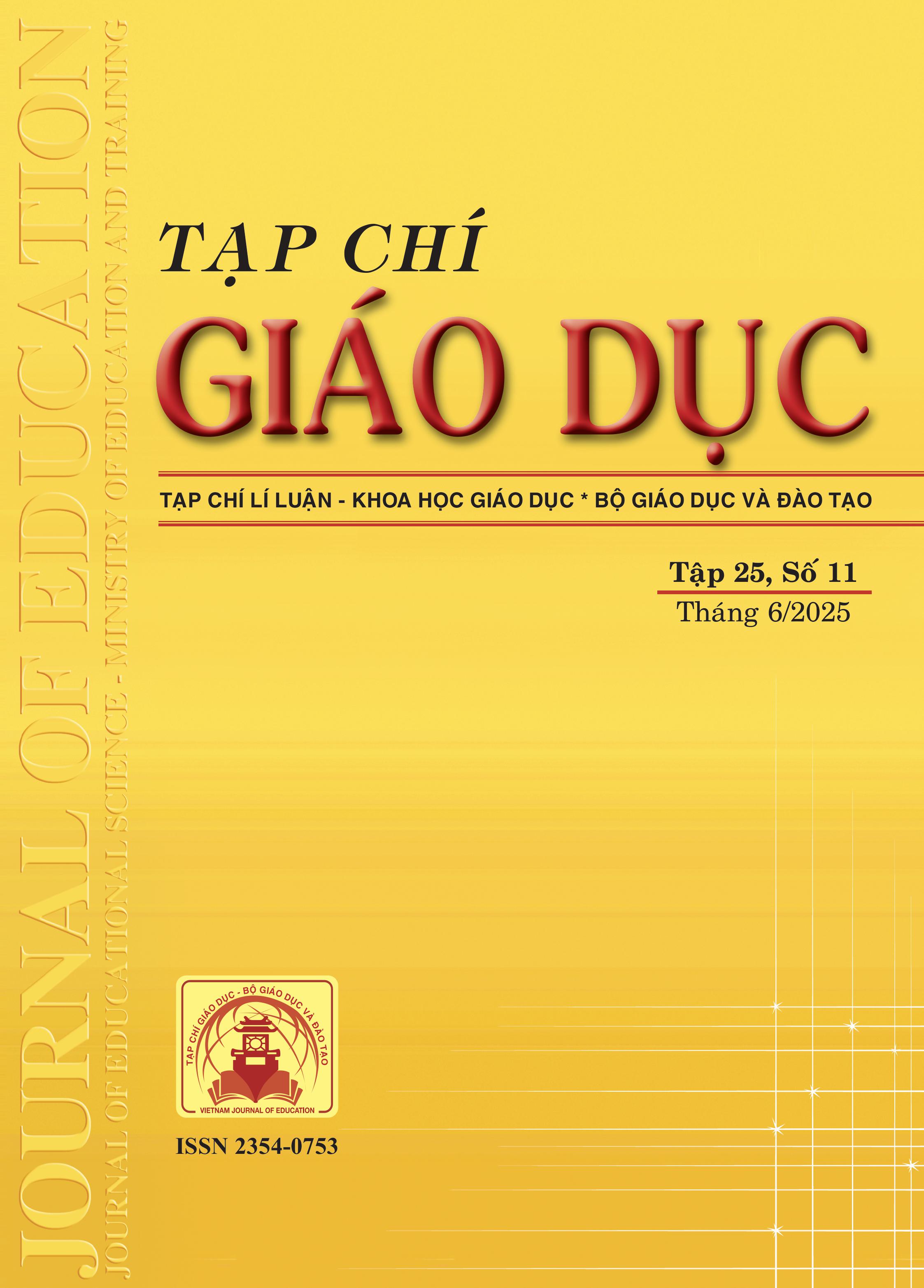Xây dựng hoạt động trải nghiệm STEM tích hợp mô phỏng dựa trên các câu ca dao, tục ngữ
Tóm tắt
In the current context of education in Vietnam, the integration of indigenous knowledge into science teaching is still limited, primarily remaining theoretical, lacking specific procedures and practical application tools. While there have been studies on combining folk knowledge with education, few have employed simulations to explore the scientific values embedded in proverbs and folk songs. This study develops the L.O.C.A.L model (Locate - Outline - Create - Apply - Leverage) to integrate proverbs and folk songs into science education through the use of simulations such as Matlab and Stellarium. The aim is to combine traditional cultural values with scientific knowledge, helping students gain a deeper understanding of both fields. The research focuses on designing STEM lessons that incorporate simulations of natural phenomena reflected in proverbs and folk songs, eventually meeting the requirements of the general education curriculum and promoting the preservation of national cultural values.
Tài liệu tham khảo
Amini, R. (2020). The effect of integrated science learning based on local wisdom to increase the students competency. In Journal of Physics: Conference Series (Vol. 1470, No. 1, p. 012028). IOP Publishing.
Andreotti, E., & Hawley, S. H. (2020). Integrating cultural elements into science education: Enhancing student engagement and conceptual understanding. International Journal of Science Education, 42(4), 487-505.
Bộ GD-ĐT (2018). Chương trình giáo dục phổ thông - Chương trình tổng thể (ban hành kèm theo Thông tư số 32/2018/TT-BGDĐT ngày 26/12/2018 của Bộ trưởng Bộ GD-ĐT).
Bộ GD-ĐT (2020). Công văn số 3089/BGDĐT-GDTrH ngày 14/8/2020 về việc triển khai thực hiện giáo dục STEM trong giáo dục trung học.
De Jong, T., & Van Joolingen, W. R. (1998). Scientific discovery learning with computer simulations of conceptual domains. Review of Educational Research, 68(2), 179-201.
Giere, R. N. (2006). Scientific perspectivism. University of Chicago Press.
Gilbert, J. K. (2016). Modelling-based teaching in science education. Springer.
Marginson, S., Tytler, R., Freeman, B., & Roberts, K. (2013). STEM: Country comparisons. Report for the Australian council of learned academies.
Mustafa Cevikbas, M. (2021). The role of computer simulations in developing students' modeling competencies. Journal of Science Education and Technology, 30(2), 234-250.
National Research Council (2011). Successful K-12 STEM education: Identifying effective approaches in science, technology, engineering, and mathematics. National Academies Press.
Oliveira, A., Feyzi Behnagh, R., Ni, L., Mohsinah, A. A., Burgess, K. J., & Guo, L. (2019). Emerging technologies as pedagogical tools for teaching and learning science: A literature review. Human Behavior and Emerging Technologies, 1(2), 149-160.
Schwarz, C. V., Reiser, B. J., Davis, E. A., Kenyon, L., Achér, A., Fortus, D., ... & Krajcik, J. (2009). Developing a learning progression for scientific modeling: Making scientific modeling accessible and meaningful for learners. Journal of Research in Science Teaching, 46(6), 632-654.
Treagust, D. F., Chittleborough, G., & Mamiala, T. L. (2004). Students’ understanding of the role of scientific models in learning science. International Journal of Science Education, 26(2), 195-212.
Tải xuống
Đã Xuất bản
Cách trích dẫn
Số
Chuyên mục
Giấy phép

Tác phẩm này được cấp phép theo Ghi nhận tác giả của Creative Commons Giấy phép quốc tế 4.0 .












